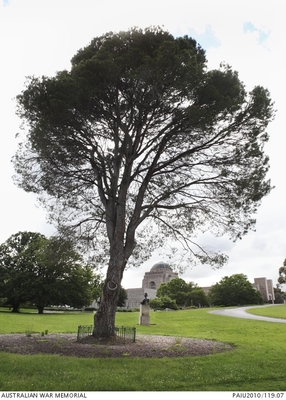With Anzac Day having been held this week, I was interested in the history of the “Lone Pine” of Gallipoli and the many that have been planted at war memorials across Australia and New Zealand.
The original Lone Pine stood at the site of a significant battle that raged from 5.30pm on 6 August, 1915 on the Gallipoli Peninsula in Turkey.
The Australians took the major Turkish battle lines in less than half an hour, but with fierce counter-attacks by the Turkish soldiers, the battle raged until 10 August and became one of the bloodiest battles of the campaign.
More than 2000 Australians lost their lives and it is estimated that between 5000 and 7000 Turkish soldiers died.
The Turkish soldiers had cut trees down to cover the trenches, and a single tree was left standing giving its name to the battle. The tree itself was obliterated during the intense fighting.
The two main varieties that claim to be this tree are “pinus bruitia” or Turkish pine and “pinus halepensis” or Aleppo pine.
The tree at the Australian War Memorial in Canberra is an Aleppo pine and this species is also grown at many memorials throughout Australia.
A third species “pinus pinea” or Stone pine is growing at the Lone Pine Cemetery at Gallipoli.
Cones and seeds were picked up and sent home by soldiers and were found to be of both species.
Many years after the war an aunt of Sergeant Keith McDowell’s wife, planted the forgotten seeds he had brought home.
In 1933, three seedlings that survived were planted at sites across Victoria. The fourth was planted in the Warrnambool Botanical Gardens on 23 January 1934.
These trees proved to be the Turkish pine.
Another soldier, Lance Corporal Benjamin Charles Smith, collected cones from the branches used to cover the trenches and sent them home to his mother, Jane McMullin, in Inverell, NSW, in remembrance of his brother Mark who was killed in the fighting on 6 August. These also sat forgotten in a drawer for 13 years until they were finally planted and two seedlings raised. These trees were Aleppo pines.
One was planted in Inverell and the other in Canberra at the memorial in 1934 by Prince Henry, the Duke of Gloucester. That tree, despite suffering severe damage in a storm in 2006, still stands today and is approximately 20 metres tall.
The Aleppo pine is a fast growing, heat and drought tolerant tree and is ideally suited to growing in the inland areas of Australia.
In fact it has become characterised as an environmental weed in SA and some other areas of south west WA and Victoria as it spreads so easily.
It is not found naturally on the Gallipoli Peninsula so at least some of the branches used to cover the trenches may have been brought from the Mediterranean areas.
The nursery at Yarralumla in the ACT grows about 500 trees a year and many of these are sold and others given to schools etc., to be planted as memorials.
The seeds are collected from the original tree planted in 1934 and also from others that were planted about 25 years ago from seedlings of the original.
The trees are available in pot sizes from tube stock to 300mm and heights from 100mm to 1 metre tall. Tube stock is priced at $20 and large trees at $200. They are intended to be grown as commemorative trees because of their size – 20 metres high and wide at maturity – and are not suitable for town gardens. They are available by mail order from the nursery.
Two were taken and planted in 1990 at the Gallipoli memorial to mark the 75th anniversary of the battle. It will adapt well to a range of soils from acid to alkaline, clay or loam as long as it is well drained.
They were growing very successfully in street trees in Narromine in NSW about 40 years ago when I planted on a property as a wind and shade belt on the western side of the house. Unfortunately mine were not descendants of the original but were doing well when we shifted.
Don’t forget the Horticultural Society’s bus trip to the Queensland Garden Expo at Nambour in July with tickets available at Danny Lyons. It’s always a fun and informative day out.







